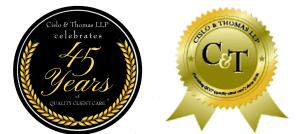Prepared by Cislo & Thomas LLP Attorney Mark D. Nielsen, Ph.D.
1. In a recent opinion regarding patent infringement claims brought under the Biologics Price Competition and Innovation Act (“BPCIA”), the Federal Circuit in a recent opinion affirmed a summary judgment of non-infringement of a method claim directed to steps for purifying a protein via adsorbent chromatography used in manufacturing the drug Neulasta®. The literal infringement analysis was not particularly complicated inasmuch as the accused infringer did not perform one of the steps involved in the method. When Amgen argued that the accused infringer’s process infringed the method claim under the doctrine of equivalents, not only did the Federal Circuit disagree, but it made a fairly alarming statement as well: “The doctrine of equivalents applies only in exceptional cases and is not simply the second prong of every infringement charge, regularly available to extend protection beyond the scope of the claims.” Slip Op. at 11. While the doctrine of equivalents has been significantly whittled away in recent years, this was a rather strong statement about the limited application of the doctrine of equivalents as a general matter. This is useful language to cite as a defendant in a patent infringement case where literal infringement is weak.
2. As a result of a recent Federal Circuit opinion, an aggrieved defendant, Unifrax, has now petitioned the Federal Circuit for rehearing, arguing that the infringement determination was based on an erroneous claim construction that broadened the language “100% by weight” to mean something more than simply “100% by weight.” The Federal Circuit looked to a related patent, cited as part of the prosecution history of the litigated patent, to support a broadening construction. Interestingly, not only is cited prior art part of the intrinsic evidence of a patent that can be consulted to ascertain construction of claim terms (see e.g., Kumar v. Ovonic Battery Co., Inc., 351 F.3d 1364, 1368 (Fed. Cir. 2003)); but, patents in the same family as an asserted patent can be consulted as intrinsic evidence for purposes of claim construction as well. Unifrax Slip Op. at 14.
3. In a significant ruling out of the Ninth Circuit last week, the Court upheld the invalidation of a copyright registration that contained knowingly inaccurate, material information therein. In Gold Value International Textile, Inc. v. Sanctuary Clothing, LLC et al., a copyright registration filed as an unpublished collection was invalidated because the plaintiff knew that portions of the collection had been sold (i.e., published) prior to the filing of the application for registration. Under 17 U.S.C. Section 411(b), a copyright fails to satisfy the requirements of registration when it (1) contains knowingly inaccurate information, and (2) the inaccurate information, if known to the Copyright Office, would have caused the Copyright Office to refuse registration. That is what happened in this case. Interestingly, Judge John A. Kronstadt of the Central District of California, wrote to the Copyright Office requesting its input on the issue prior to issuing a ruling on summary judgment in the district court. When the Copyright Office said it cannot register a collection as unpublished when portions of the collection were previously published, summary judgment was granted, and now affirmed by the Ninth Circuit. A fee award was also affirmed by the Ninth Circuit. One interesting takeaway from the case is that the knowledge required for submitting an application with knowingly inaccurate information does not have to rise to the level of fraudulent intent.



